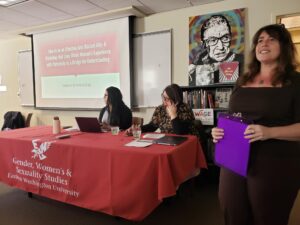Event Details
Wednesday, Jan. 29 | Noon to 12:50, MON 207
Thousands of Native women and girls have died and disappeared from tribal lands, rural communities, and cities in the last three decades without official explanation. We need to understand how social structures have worked to devalue the lives of indigenous women and girls. Tribal people are impacted by structural discrimination and bias in schools and legal systems. Examples of historical trauma include grief and loss of loved ones due to war, boarding schools, foster homes, forced assimilation, and inadequate health care. Native Americans also have unique mobility patterns as they travel from rural tribal territories to urban centers. Safe travel for Native girls and women involves indicators of health and risk factors. These unique mobility patterns, combined with the complicated jurisdictional scheme of Indian Country, make it difficult to protect Native women. Tribal communities range from urban centers to the large land base reservations with rural, isolated, and unincorporated communities with closed areas and limited or non-existent law enforcement resources to address this need for greater protection.



